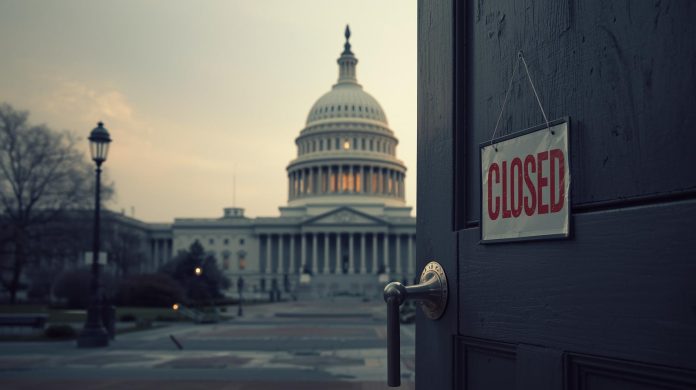September 30 was the end of Fiscal Year 2025 for the federal government. The federal government has entered a shutdown as of 12:01 AM ET on Wednesday, October 1, 2025. A government shutdown can have wide-ranging impacts on our communities—from delays in federal services to uncertainty for federal workers, small businesses, and military families. A government shut down occurs when Congress is unable to pass the funding bills—known as appropriations—that keep federal agencies running into the next fiscal year.
Drivers of the Shutdown
At the heart of the impasse are Democratic demands to extend enhanced subsidies for health insurance purchased through ACA exchanges and to reverse recent Medicaid cuts enacted under President Trump’s domestic policy agenda. Republicans, holding majorities in Congress, have pushed spending proposals that exclude these health care adjustments. Democrats have refused to support any short-term funding bill that omits their priorities, arguing that millions of Americans could see their insurance premiums double and risk losing coverage if credits expire.
Vice President JD Vance asserts Democrats voted to shut down the government “because they demand we fund free healthcare for illegal aliens.”
Meanwhile, Minnesota Representative Kristen Robbins maintains that continuing free health care for illegal immigrants has risen in cost from $220 to $600 million per year. “With a $6 billion deficit, we cannot afford that. We want to have compassion, but we also need to prioritize our spending on programs.”
A government shut down could have significant effects on the health care industry, disrupting federal funding streams, operations, and patient access to critical services. While essential health programs typically continue to run, providers, patients, and insurers may still face challenges as financial uncertainty ripples through the system.
Partisan Division
Both sides blame each other for the deadlock. Republican leaders accuse Democrats of holding the government budget “hostage” to healthcare reforms. At the same time, Democrats insist that the shutdown will disproportionately harm ordinary Americans through higher insurance costs and restricted access to care. Senate and House negotiations have collapsed repeatedly, with neither side reaching the 60-vote threshold needed to advance their preferred bill.
Impact on Americans
While essential programs like Social Security, VA benefits, and existing Medicaid payments continue for now, nonessential federal workers face furloughs and millions may experience slowdowns in services and abrupt coverage changes if the shutdown drags on. The Congressional Budget Office estimates that if subsidies expire, more than four million people could lose their insurance within a decade, and insurance rates could spike by hundreds of dollars per month for many families.
Political Fallout
Leaders from both parties continue to frame the standoff as a fight for the nation’s health and fiscal sustainability. Democrats say higher health costs will be blamed on President Trump and the Republican majority, while Republicans argue the real crisis is unchecked spending and delayed budget reforms. With no resolution in sight, federal agencies are implementing shutdown plans and voters face an uncertain future for affordable healthcare.
Key Effects on Health Care
A shutdown threatens delays or lapses in federal funding for agencies such as the Centers for Medicare & Medicaid Services (CMS), National Institutes of Health (NIH), and Food and Drug Administration (FDA). Research grants, medical approvals, and administrative support may be postponed, slowing innovation and regulation.
Most core programs—including Medicare, Medicaid, and the Children’s Health Insurance Program (CHIP)—continue to distribute funds because they are considered mandatory, not discretionary. However, staffing, claims processing, and customer service can be hindered, leading to frustration for providers and beneficiaries.
Future Uncertainty
Extended shutdowns create anxiety for health care professionals, administrators, and patients. Hiring freezes, research interruptions, and gaps in regulatory oversight compound ongoing challenges in a sector already facing workforce shortages and rising costs. Although most patients may not immediately feel the effects, a government shutdown injects instability into the healthcare sector, putting agency operations and some vital services at risk. The possibility of prolonged disruptions heightens concerns about the reliability and responsiveness of federally funded health programs.



